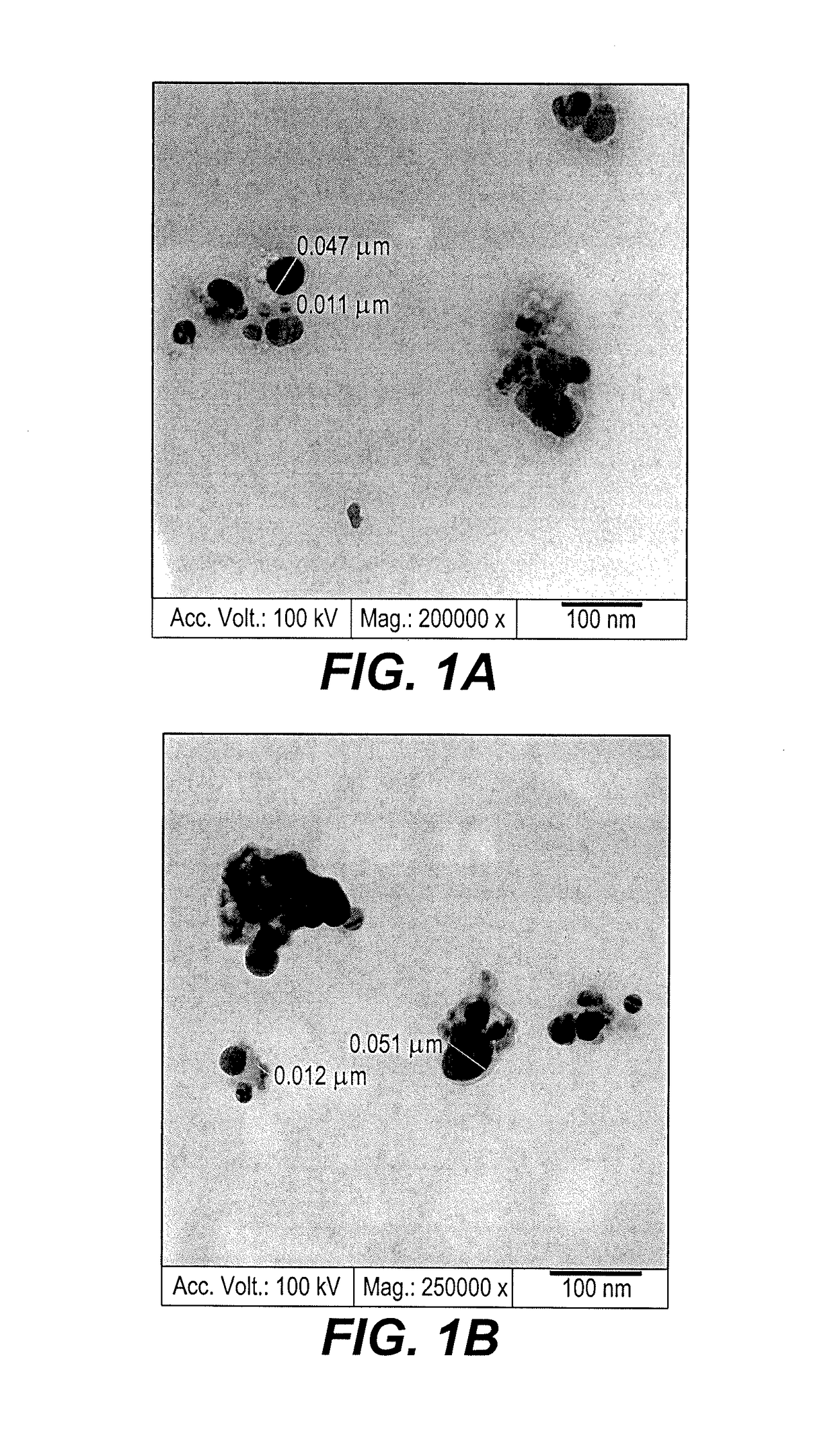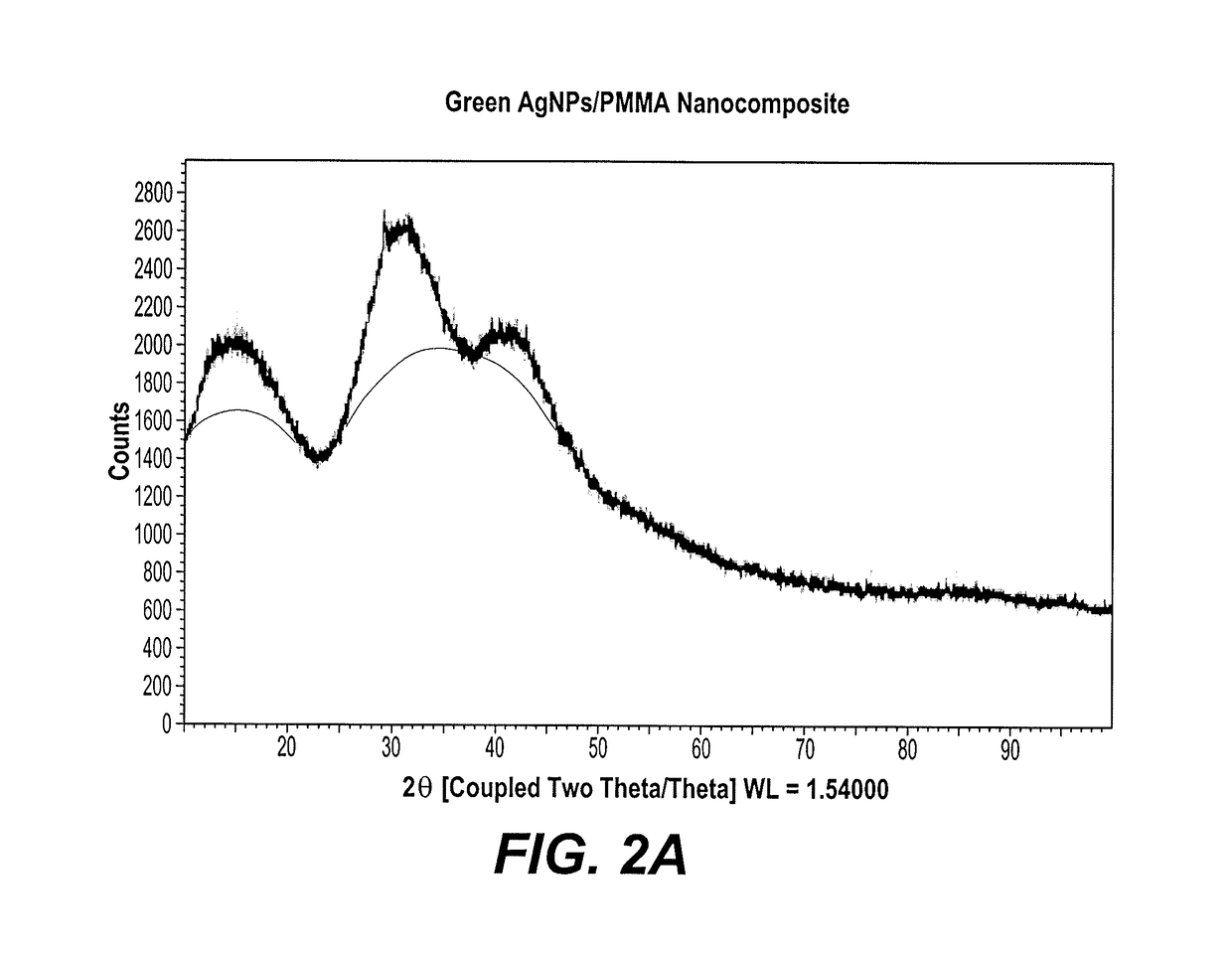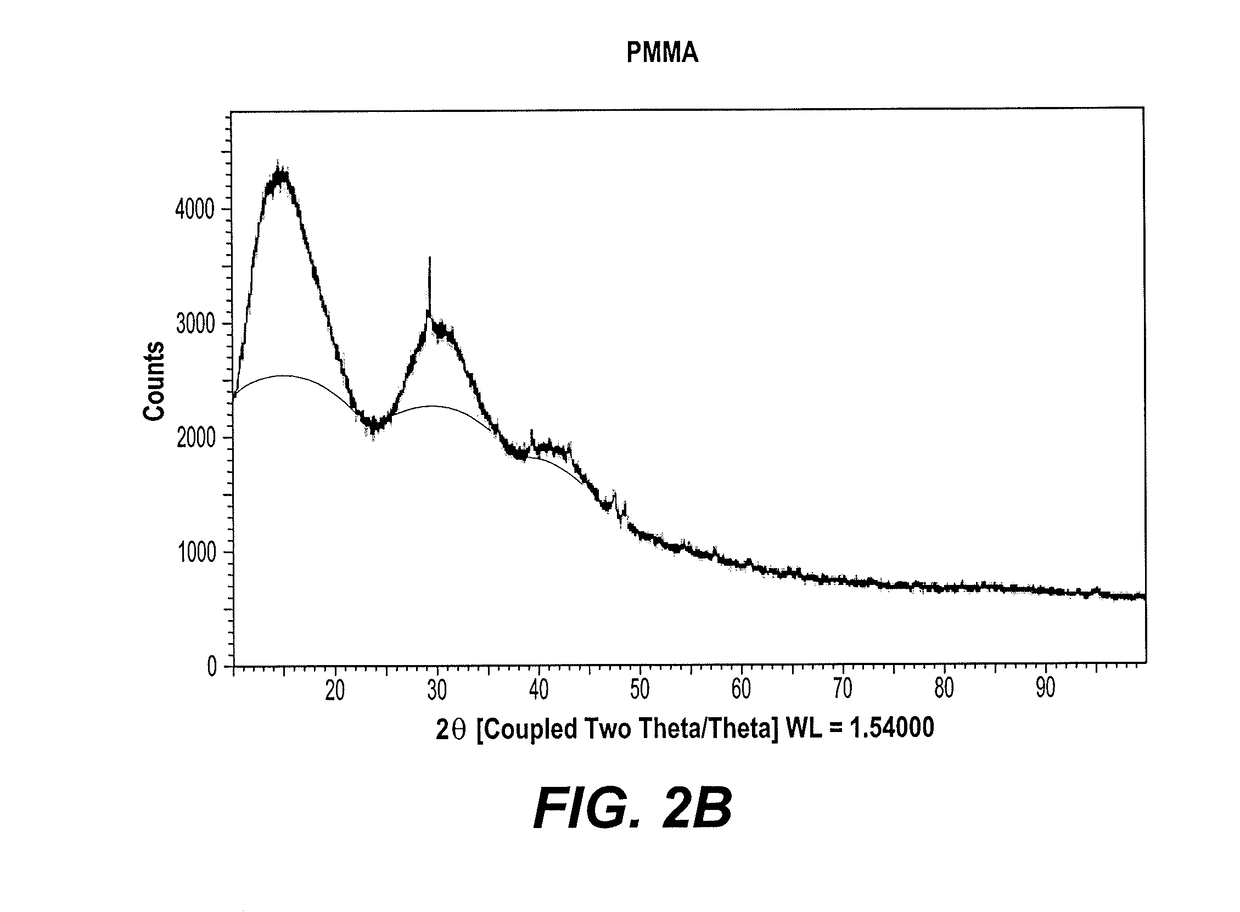Synthesis of silver-PMMA nanocomposite film using herbal extract
a nano-composite film and silver metal technology, applied in the field of polymer/metal nanoparticle composites, to achieve the effect of reducing silver ions to silver metal nanoparticles
- Summary
- Abstract
- Description
- Claims
- Application Information
AI Technical Summary
Benefits of technology
Problems solved by technology
Method used
Image
Examples
example 1
Preparation of Greener Silver Nanoparticles
[0020]We collected Aristolochia bracteolate (also known as Um-Jalajel) buds from a rural part of the Kabooshia area in Sudan. We took 5 g of the buds, and cleaned, washed, dried, and ground them. We soaked the ground, dried buds in boiled distilled water overnight. The extract was filtered, and the filtrate was immediately used to prepare silver nanoparticles. The filtrate was treated with an aqueous solution of silver nitrate (AgNO3), which was first prepared as follows.
[0021]An aqueous solution of silver nitrate (AgNO3), was prepared by dissolving 1 mmol / ml of silver nitrate in 50 ml of distilled water. The filtrate from above was added to the aqueous silver nitrate solution, with vigorous stirring at 60° C. for 10 minutes. The colloidal solution changed in color from colorless to yellow, as noted by visual observation, confirming reduction of the silver ions and formation of the silver nanoparticles (AgNPs). Then the resulting greener na...
example 2
Synthesis of Silver-PMMA Nanocomposite Film
[0023]We obtained PMMA [poly (methyl methacrylate)] from SABIC Company, in Saudi Arabia. We dissolved 6 g of the PMMA in N′,N-dimethylformamide (DMF) obtained from R & M Marketing, in Essex, UK. A freshly prepared solution of the silver nanoparticles was added to the PMMA solution. The addition was carried out in a hood under constant stirring at 80° C. The mixture was stirred for 1 hour in order to complete the reaction.
[0024]The resulting solution was light brown, due to the formation of silver colloids. The solution was then cast onto glass plate. The DMF was evaporated at room temperature, resulting in the nanocomposite film. Once dry, the film was removed from the glass plate.
[0025]X-ray diffraction (XRD) was performed on a Bruker D8 Discover, to examine and compare the greener AgNPs / PMMA nanocomposite and PMMA films. See FIGS. 2A and 2B.
[0026]TGA (thermogravimetric analysis) thermograms were carried out on a Mettler Toledo TGA / DSC 1, ...
example 3
Antimicrobial Study
[0027]The antibacterial activity of the silver-PMMA nanocomposite film was evaluated against both a gram-negative bacteria, Escherichia coli (E. coli), and a gram-positive, Bacillus cereus, by the disc diffusion method. Nutrient agar medium plates were prepared, sterilized, and allowed to solidify. Once set, bacterial cultures were swabbed on these plates. Then, fractions of either pure PMMA or silver-PMMA nanocomposite film were placed in the nutrient agar plate, which was then incubated at 37° C. for 24 hours. Zones of inhibition were observed, and are depicted in FIG. 4.
PUM
| Property | Measurement | Unit |
|---|---|---|
| Temperature | aaaaa | aaaaa |
| Temperature | aaaaa | aaaaa |
| Time | aaaaa | aaaaa |
Abstract
Description
Claims
Application Information
 Login to View More
Login to View More - R&D
- Intellectual Property
- Life Sciences
- Materials
- Tech Scout
- Unparalleled Data Quality
- Higher Quality Content
- 60% Fewer Hallucinations
Browse by: Latest US Patents, China's latest patents, Technical Efficacy Thesaurus, Application Domain, Technology Topic, Popular Technical Reports.
© 2025 PatSnap. All rights reserved.Legal|Privacy policy|Modern Slavery Act Transparency Statement|Sitemap|About US| Contact US: help@patsnap.com



